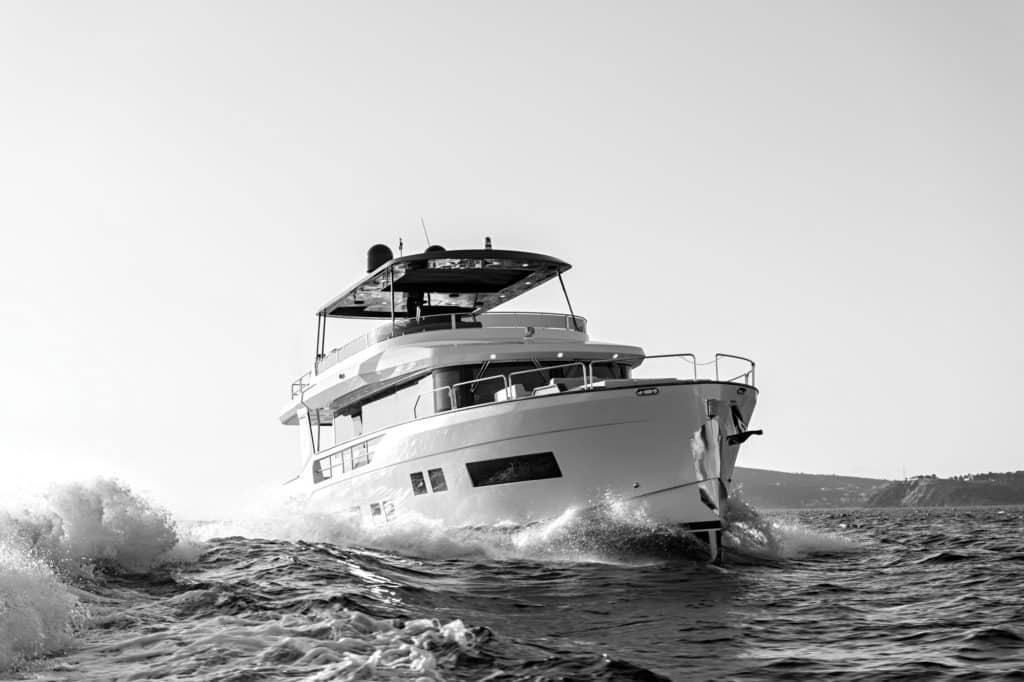
The Sirena Yachts 68 is an immensely practical semidisplacement cruiser. The hull is based on the Sirena 64, which debuted in 2017, and is an evolution that goes far beyond the extra few feet of length that have been added toward the stern.
Like the 64, the 68 has vertical bridge windows and a sharp, square stem with just a hint of reverse rake. There is substantial freeboard, along with square and rectangular hullside windows, echoing the original yacht’s look. Also like the 64, the 68 has a three-quarter hardtop that surrounds a chunky, funnel-type mast. All of these features define a rather-youthful profile in the explorer category.
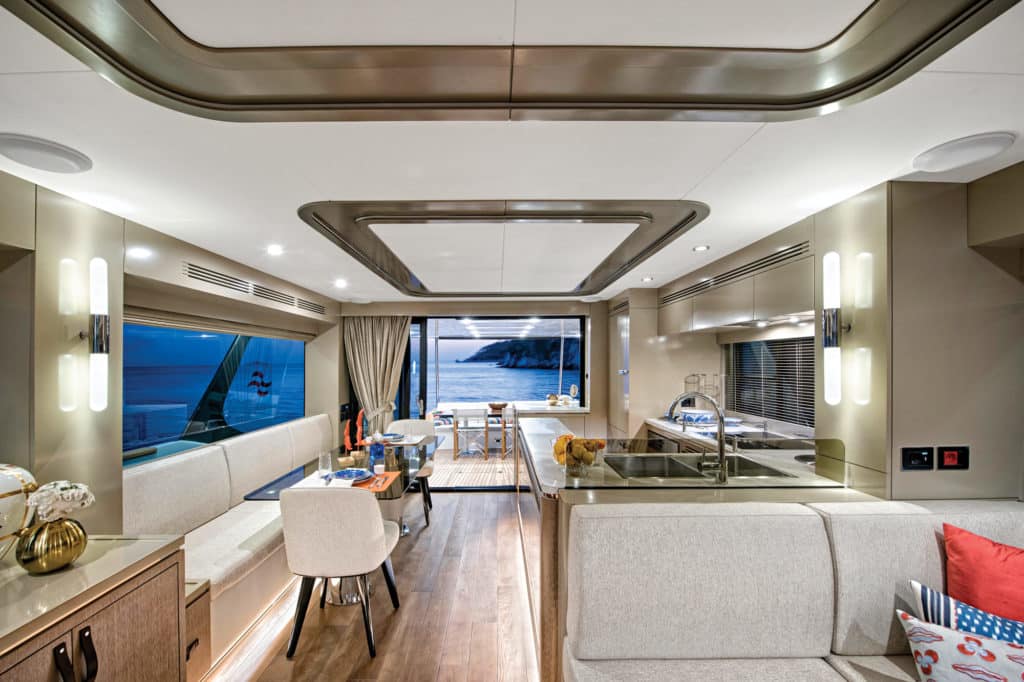
What is obviously—and wonderfully—new for the Sirena 68 is the addition of glass in what used to be solid buttresses and side-deck bulwarks. All of that glass means better views, as well as more light in the main salon thanks to the bulwark cutouts.
Many more refinements are on the inside. While the Sirena 64 and 68 are built in Turkey, they were conceived in Buenos Aires, Argentina, where Germán Frers’ studio is based. The studio is best-known in the sailing world for its work with Nautor’s Swan, Hallberg-Rassy and, in its early days, Wally. Frers’ team has penned the whole Sirena portfolio, which presently includes the smaller Sirena 58 and the bigger Sirena 88 RPH. Frers handled all the naval architecture, exteriors and space planning.
The Sirena 68’s extra length aft allows for crew space in the transom, as well as an aft deck and flybridge that are a bit bigger than the 64’s.
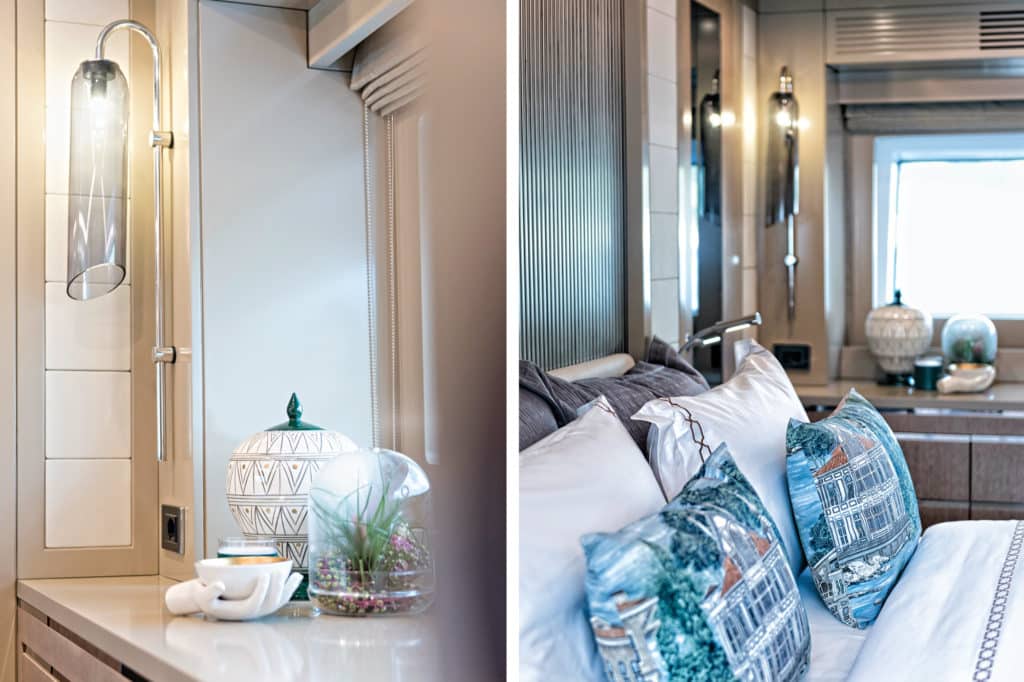
The 68’s flybridge has a flexible, zoned entertainment space. The after end is open to interpretation, which, for most owners, means stand-alone sun loungers. To starboard is a bar with two stools. Forward of the bar is a dining table for seven to 10 guests. Far forward is the upper helm station, which is to starboard with the option of a copilot seat. A smaller dinette is to port.
Down on the aft deck are a transom sofa and a dining table. Forward, guests have a foredeck terrace with another dinette and sun pads, as well as plenty of deck space to walk around freely.
Sirena’s interiors are by Cor D. Rover’s studio in the Netherlands, which has worked with Horizon Yachts, Azimut and Zeelander, as well as on superyachts. This first Sirena 68’s decor is light and bright, with reconstituted oak veneers and satin varnish.
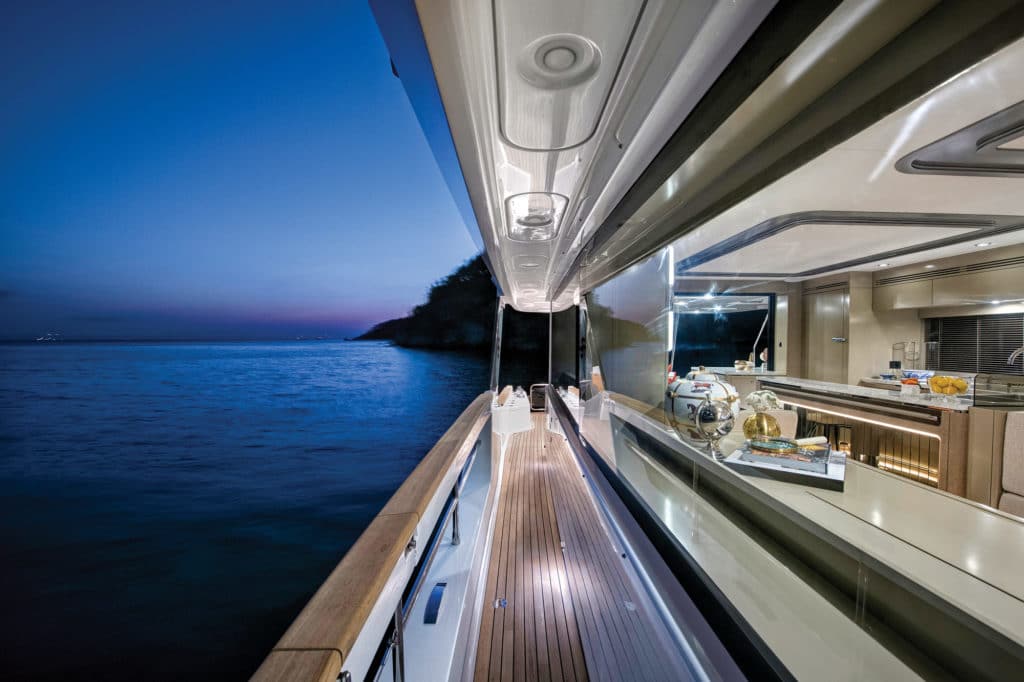
The main-deck layout is an open plan with an aft galley. The 68’s galley and aft deck spaces meld to become the heart of the vessel during the day, with a drop-down window between them. The central area is for lounging and watching TV.
The 68’s bridge console is in the same portside location as it was on the 64, with the same access to the side deck via a full-height pantograph door. The helm can have a single pilot seat or two seats. Given that the main salon is all one level, visibility is virtually 360 degrees, interrupted only by a couple of blind spots on each side of the aft deck doors.
There are a few changes to the area adjacent to the bridge. The 68’s staircase to the lower deck is different and leaves room for a forward-facing bench seat under the windshield. That seat should be a popular spot for sea views underway. The dogleg staircase has been rotated and now has a hullside window that lets natural light into the lower lobby.
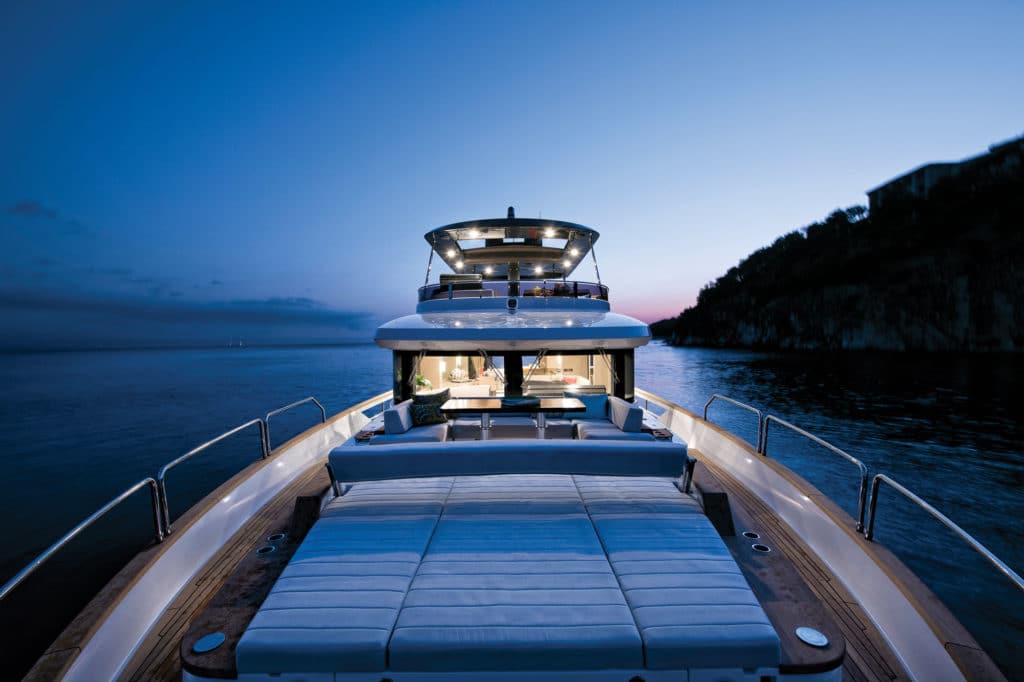
Like the 64, the 68 is available with three or four staterooms. The owner’s stateroom is amidships and spans full beam. His-and-hers heads are optional, with a shower stall between them, plus a walk-in closet.
The en suite VIP stateroom is forward, and there’s an amidships stateroom to port with twin berths that convert to a double. The 64’s fourth stateroom was a single-berth affair, but the 68’s has a double-bunk setup. The fourth stateroom can serve as a lower lounge or a laundry-room extension. Even with the fourth stateroom, there is room for a washer/dryer and linen stowage.
The 68 has a couple of powerplant choices. The standard specification is twin 900 hp Volvo Penta D13s running out through ZF V-boxes for a reported top speed around 23 to 24 knots. For those wanting more oomph, 1,000 hp D13s reportedly add a couple of knots to the top-end speed.
This 68 has the larger diesels and was between two-thirds and three-quarters load with six people, water at 90 percent and fuel tanks essentially full. Fully loaded, this yacht displaces around 103,600 pounds, which is substantial.
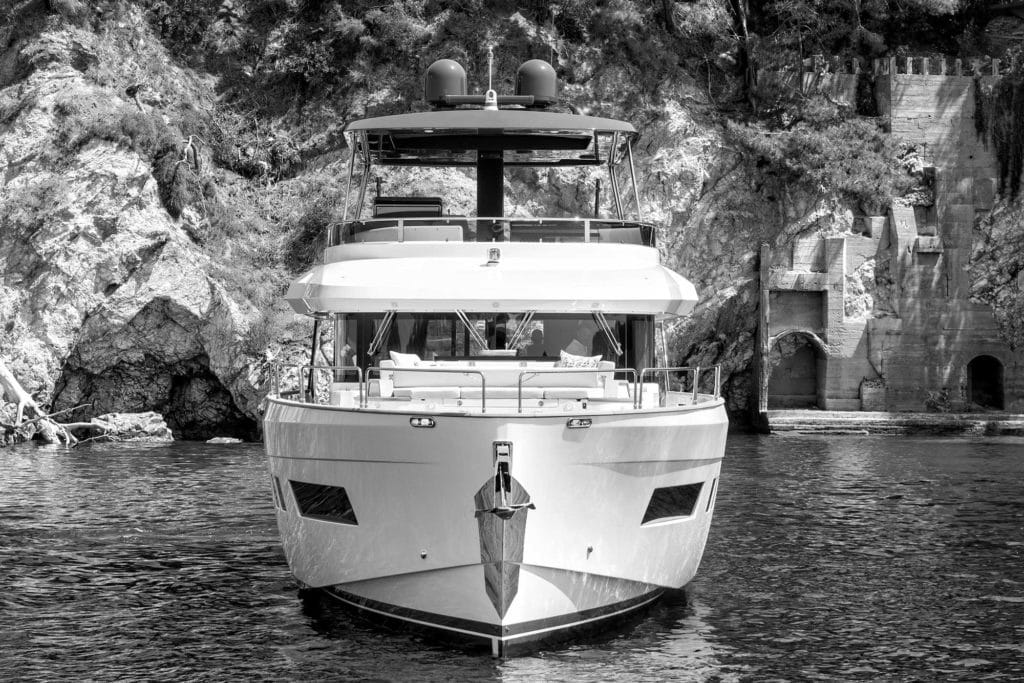
There was hardly a breath of breeze and a sea state to match as we headed out on the Cote d’Azur, leaving virtually no work to be done by the Humphree Interceptors and Seakeeper stabilizer. Given the load, the 68 made 25.6 knots at 2,450 rpm, with the engines consuming 100 gallons per hour. At a fast cruise of around 16 knots, fuel burn was cut in half, translating to a working range of 400 nautical miles, including a 10 percent reserve.
Running at 1,200 rpm and 10 knots, that range could push out to more than 850 nm. At 1,000 rpm and 8.5 knots, it’s more like 1,150 nm. No wonder Frers says his Sirena hulls are engineered to be efficient across a wide range of hull speeds, with the chined hull’s inherent stability compared with round-bilge architecture.
Regardless of how quickly owners choose to dash, the majority will no doubt spend most of their cruising time at displacement speeds, wrapped in 68 feet of homelike comfort.
Shh…
At 15 knots, I measured 77 decibels at the inside helm—about the same as a vacuum cleaner or radio. At 10 knots, it was 85 to 87 decibels in the owner’s stateroom, 75 decibels in the VIP stateroom, and 80 decibels in the amidships twin-bunk stateroom.
Details
Built at modern facilities in Turkey, the Sirenas are all resin-infused. The crew area for two is tucked into the stern with its own door in the transom. There’s room for a walk-in head with a shower and for a crew mess. Main-salon headroom is 6 feet, 9 inches. The shafts and 34-inch-diameter props spin in half-tunnels, allowing an island-friendly draft of 4 feet, 3 inches. The hydraulic swim platform accommodates 1,000 pounds of yacht tender. For stern-to maneuvering, the 68 I got aboard had optional wing controls in a drop-down panel beneath the fly steps.
Extras
The big options on the Sirena 68 include the hardtop and Seakeepers or fins, and occasionally all three for owners who prefer a belt-and-braces approach to stabilization.
Take the next step: sirenayachts.com









